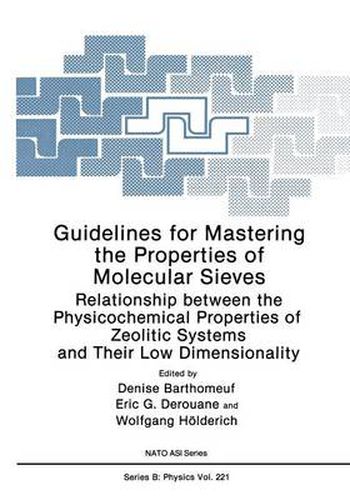Readings Newsletter
Become a Readings Member to make your shopping experience even easier.
Sign in or sign up for free!
You’re not far away from qualifying for FREE standard shipping within Australia
You’ve qualified for FREE standard shipping within Australia
The cart is loading…






This title is printed to order. This book may have been self-published. If so, we cannot guarantee the quality of the content. In the main most books will have gone through the editing process however some may not. We therefore suggest that you be aware of this before ordering this book. If in doubt check either the author or publisher’s details as we are unable to accept any returns unless they are faulty. Please contact us if you have any questions.
Low dimensionality is a multifarious concept which applies to very diversified materials. Thus, examples of low-dimensional systems are structures with one or several layers, single lines or patterns of lines, and small clusters isolated or dispersed in solid systems. Such low dimensional features can be produced in a wide variety of materials systems with a broad spectrum of scientific and practical interests. These features, in turn, induce specific properties and, particularly, specific transport properties. In the case of zeolites, low dimensionality appears in the network of small-diameter pores of molecular size, extending in one, two or three di mensions, that these solids exhibit as a characteristic feature and which explains the term of molecular sieves currently used to name these ma terials. Indeed, a large number of industrial processes for separation of gases and liquids, and for catalysis are based upon the use of this low dimensional feature in zeolites. For instance, zeolites constitute the first class of catalysts employed allover the world. Because of the peculiarity and flexibility of their structure (and composition), zeolites can be adapted to suit many specific and diversified applications. For this reason, zeolites are presently the object of a large and fast-growing interest among chemists and chemical engineers.
$9.00 standard shipping within Australia
FREE standard shipping within Australia for orders over $100.00
Express & International shipping calculated at checkout
This title is printed to order. This book may have been self-published. If so, we cannot guarantee the quality of the content. In the main most books will have gone through the editing process however some may not. We therefore suggest that you be aware of this before ordering this book. If in doubt check either the author or publisher’s details as we are unable to accept any returns unless they are faulty. Please contact us if you have any questions.
Low dimensionality is a multifarious concept which applies to very diversified materials. Thus, examples of low-dimensional systems are structures with one or several layers, single lines or patterns of lines, and small clusters isolated or dispersed in solid systems. Such low dimensional features can be produced in a wide variety of materials systems with a broad spectrum of scientific and practical interests. These features, in turn, induce specific properties and, particularly, specific transport properties. In the case of zeolites, low dimensionality appears in the network of small-diameter pores of molecular size, extending in one, two or three di mensions, that these solids exhibit as a characteristic feature and which explains the term of molecular sieves currently used to name these ma terials. Indeed, a large number of industrial processes for separation of gases and liquids, and for catalysis are based upon the use of this low dimensional feature in zeolites. For instance, zeolites constitute the first class of catalysts employed allover the world. Because of the peculiarity and flexibility of their structure (and composition), zeolites can be adapted to suit many specific and diversified applications. For this reason, zeolites are presently the object of a large and fast-growing interest among chemists and chemical engineers.